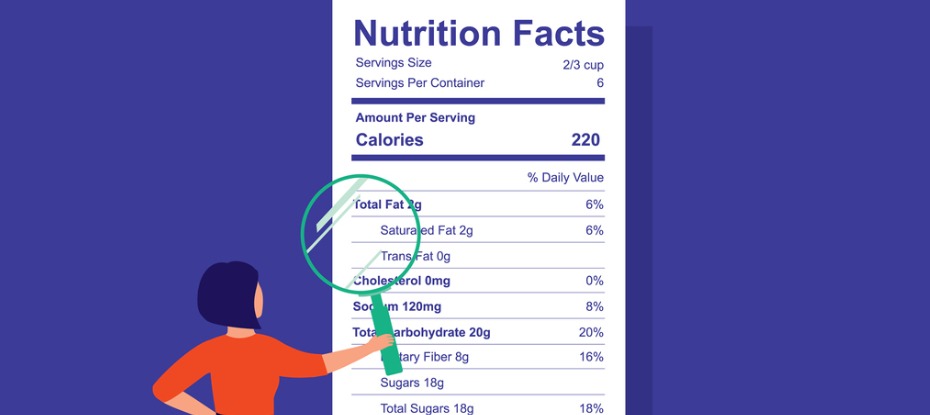
Making smart food choices can be challenging, especially in today's fast-paced world, where convenience often trumps quality. Now we know that obesity and high rates of preventable disease are a result of these choices. Have you ever wondered what those long ingredient names really mean or how to tell if something's actually good for you? Whether you're trying to eat healthier, have specific nutritional goals in place, or are just curious about what's in your food, this guide is your go-to for understanding food labels without needing a science degree. Read on!
We Are What We Eat
In Australia, unhealthy diets and obesity are the leading causes of poor health. Around 27,500 Australians die every year from an unhealthy diet. Many more suffer from diseases that are caused by or made worse by a poor diet. Chronic health conditions range from stroke, heart disease, bowel cancer, lung cancer, and type 2 diabetes. Poor eating has wide-ranging social and economic costs.
Less than 1% of the population eats a diet consistent with the Australian Dietary Guidelines. A study in 2017-18 revealed that 90% of Australians weren’t eating enough vegetables, and more than 35% of their energy intake came from unhealthy foods and drinks high in sugar, salt, and saturated fat.
Food Labelling For Better Nutrition
Food labels are an important source of nutritional information, but not enough consumers use them at the time of purchase. If consumers understood food label information slightly better, they could increase the likelihood of making better food choices.
Food Standards Australia New Zeal Zealand (FSANZ) sets food labelling standards in the Food Standards Code, which are enforced by the Australian states and territories. Australia introduced labelling laws in 2003 and required all manufactured food to carry a nutrition information panel (NIP). The only exceptions are:
- Single-ingredient foods such as fruit, vegetables, water, etc.,
- Very small packages and foods like herbs, spices, tea, and coffee,
- Food sold at fundraising events or food made and packaged at the point of sale,
- Unpackaged food, as long as no nutrition claim is made.
Most foods we should eat don’t have a food label or nutrition panel because they’re single-ingredient foods such as fresh fruit and vegetables, whole grains, lean meat, poultry, and fish.
The Food Standards Code also prohibits false, misleading, or deceptive representations. Labels must be legible (at least 3mm high or 1.5mm high on small packaging) and prominent from the background.
What Do I Find in Food Labels?
Food labels must present all ingredients, including those that make up compound ingredients - a mixture of other ingredients. For example, a chocolate chip biscuit label can’t be just chocolate. It must include the ingredients used to make the chocolate, such as cocoa, cocoa butter, sugar, etc.
The NIP provides the quantity of nutrients per serve and 100 g or 100 ml. The seven metrics presented in the NIP include energy in kilojoules, protein, total fat, saturated fat, total carbohydrates, sugar, and sodium.

Including a 100-gram or 100-ml value makes it easier for consumers to convert the ingredient list into a percentage and identify how much they're eating, if not the whole package. If the label lists 30g sugar per 100g, one can know that 30% of the product is sugar.
If an ingredient or compound ingredient makes up less than 5% of the product, it doesn’t need to be listed. However, the 5% rule doesn’t apply to any additives or allergens, as these must be a listed ingredient no matter how small the amount. Food additive numbers and chemical names are used worldwide and will appear after their class, such as preservatives, colour, etc.
A food label must include a range of information that not only helps with better nutrition decisions but also can keep some consumers safe, including:
- Ingredient list and percentage labelling
- Nutrition health and related claims
- Allergens (nuts, fish, milk, eggs, wheat, soy, sesame seeds)
- Country of origin
- Food allergies and intolerances
- Pregnancy warning
- Fish names
Deciphering Food Labels & Nutrition Facts
It’s no wonder some consumers are overwhelmed when they read the nutrition labels on packaged foods. There is often a list of ingredients and nutrition that looks more like part of a scientific paper than stuck behind a cereal box. However, taking the time to understand these numbers can turn a regular consumer into an informed food purchaser to make the best food choices for yourself and your family.
About the Ingredient List
Ingredients are listed in descending order by ingoing weight so the most prevalent ingredient in the food is listed first, and the least is listed last. The list of ingredients can be long and difficult to read for many consumers because they must be scientifically accurate.
Some grain products have the words ‘Vitamins and Minerals’ followed by ingredients that are micronutrients, including vitamins A, C, D and E, magnesium, zinc, niacin, and calcium. These are added ingredients to enhance the nutritional quality of foods.
Understanding Key Terms and Claims
Manufacturers are limited to the claims they can make about a product, but this doesn't prevent misleading consumers. The most common claim is to call a product ‘light’ or ‘lite’. Some consumers assume that the product is low in fat or calories when in fact, the claim relates to the food being light in texture or colour.
On the other hand, some products that contain virtually no saturated fat or sugars, because they come from plants, might claim to have none or low amounts in the hope that consumers choose that brand over another, even though saturated fat or sugars shouldn’t be a consideration in the first place.
Serving Sizes and Portion Control
Some consumers look at the value of ingredients per serving size and may think the product isn’t too bad nutritionally. But if they fail to check the serving size when consuming the product, they could be eating twice the serving size or more.’

Additional Label Information
Some information on food packaging is voluntary labelling, including the Percentage Daily Intake (%DI) and Health Star Rating (HSR). The information is often displayed prominently on the front of the packaging. Some consumers are more likely to use this information than the nutrition information panel on the side of the packaging.
The %DI displays the nutrient amount of one serving as a percentage of an average adult’s requirements. The grams per serving should be checked and compared to other products to ensure a fair comparison. The %DI includes kilojoules plus other nutrients, including total fat, saturated fat, sugar, carbohydrates, and sodium.
The Health Star Rating rates the nutritional content of packaged food between half a star (poor) and five stars (good). The star rating makes it easy to compare two brands of the same type of food.
How to Read Food Labels in Australia
Reading and understanding the nutrition panel can be confusing initially, but it gets easier with practice. It won’t be long before you're using food labels for making healthy food choices.
Servings - At the very top of the label, find the number of servings and quantity per serving. Consider this when moving further.
Ingredients - Look at this list; remember the first ingredients listed are the ones found in greater quantities, so if you see sugar, white flour, and butter, the food you picked up is probably not the healthiest option.
Sugar - Sugar can be ‘hidden’ in the ingredient list with many names, but the most common ones are fructose, glucose, sucrose, maple syrup, brown sugar, caster sugar, maple syrup, and honey. Be mindful of the quantities; according to the World Health Organisation (WHO), one shouldn't consume over 10% of your total calorie intake as added sugars.
Protein - Found in meat, poultry, fish, eggs, beans, nuts and seeds, it helps with growth and repair.
Fat - The fat content in food is split into total fat and saturated fat. Ideally, choose foods that are less than 10g per 100g. Moreover, aim for no more than 3g per 100g of saturated fat as this type isn't beneficial for our bodies. Look out for ingredients high in saturated fat, including animal fat (especially red meat), butter, margarine, milk solids, coconut oil/milk/cream, palm oil, copha, and vegetable shortening. And let's not even go into trans fats, as several studies have linked their consumption to increased risk of inflammation, cardiovascular disease, and more.
Carbohydrates - Found in fruit, vegetables, and whole grains but also cakes and sugary foods, carbohydrates provide us with energy. Be mindful of the type of carbohydrate you choose to eat.
Energy - Check how many kilojoules (kJ) per serving. Remember any unused energy we consume is stored as fat in the body. But don't get stuck in counting numbers, as human bodies aren't machines and input doesn't necessarily equal output. This means 200 calories burned on a treadmill (output) won't simply balance out 200 calories of ice cream consumed (input).
Sodium - Like sugar, processed food can be loaded with salt. Choose lower sodium options with less than 400 mg per 100g or ideally, less than 120mg per 100g. Salt can be ‘hidden’ in the ingredient list as baking powder, celery salt, garlic salt, meat/yeast extract, monosodium glutamate (MSG), onion salt, rock salt, sea salt, sodium, sodium ascorbate, sodium bicarbonate, sodium nitrate/nitrite, stock cubes, and vegetable salt.
Fibre - When choosing bread or cereal products, look for those with 3g or more per serving. Fibre is essential for our gut and whole body functioning.
For detailed information, see the Australian Government’s How to Understand Food Labels.
Understanding Food Labels Australia
Knowing how to read food labels empowers consumers to make informed choices for better nutrition. When you know what to look for on a label, it means you can navigate the supermarket aisles with confidence. If you need further assistance from a nutritionist or dietician, your HIF Extras cover may allow you to claim a rebate.